Best acoustic guitar pickups 2025: Options for every type of acoustic guitarist, from strummers to percussive players
Improve your acoustic tone today with our selection of the best acoustic guitar pickups you can buy
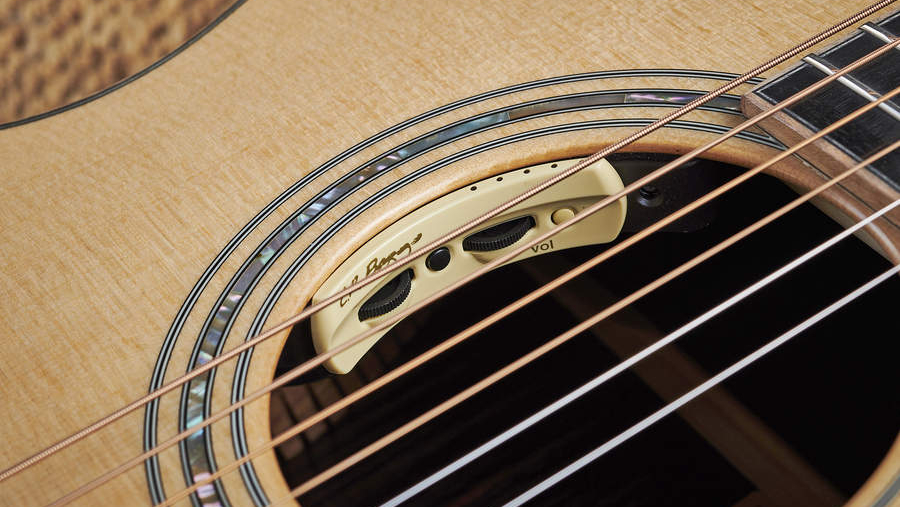
Fitting a pickup to your acoustic guitar allows you to amplify your playing without perching in front of a microphone. Broadly speaking, there are three options when it comes to the best acoustic guitar pickups: the under-saddle piezo (which you’ll find built into most mid-price electro-acoustics), bridge plate transducer and soundhole pickup.
Each type of pickup offers a different tone, so experiment to see which suits your style of playing best. We’ve saved you some time by sampling a range of models to suit every type of acoustic guitar player.
We've included some in-depth buying advice at the end of this guide, so if you'd like to read more about the best acoustic guitar pickups, click the link. If you'd rather get to the products, keep scrolling.
Best acoustic guitar pickups: Our top picks
The LR Baggs Anthem Tru-Mic acoustic guitar pickup is the best all-rounder. It combines a piezo pickup with a mic to achieve more of a ‘true’ acoustic sound. In this case, it’s a noise-cancelling mic mounted inside on the guitar’s bridge plate close to the guitar’s top – the primary source of its tonal character.
Americana songwriters Brian Fallon and Sturgill Simpson are two recent converts to the Anthem’s Tru-Mic charms with the Element piezo used here already highly rated too. The mic adds the crucial ingredient of helping to capture your guitar’s natural sound more effectively.
Best acoustic guitar pickups: Product guide
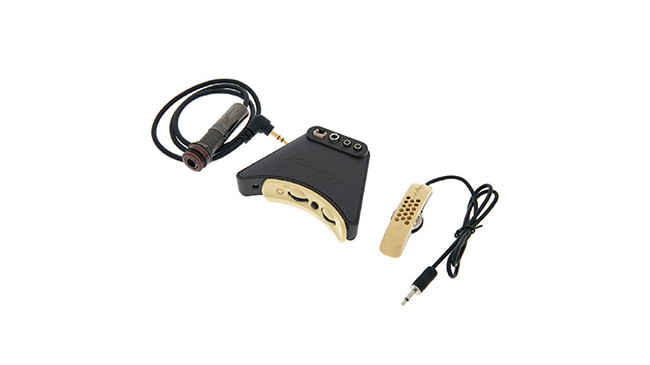
1. LR Baggs Anthem
Our expert review:
Specifications
Reasons to buy
Reasons to avoid
The combination of a piezo and a mic in one system sounds like the promise of the best of both worlds with warmth and clarity. And when it comes to retrofit acoustic pickups this is the closest to that dream scenario we’ve heard. The Tru-Mic technology here delivers a much more open sound than the boxy character some mic blend systems can suffer from by picking up more of the soundboard detail.
The mic is fixed three millimetres from the guitar top, while the Element piezo pickup is fitted under the bridge saddle (it’s also available to purchase separately) and the two sources can then be blended together with a mix control to suit your needs.
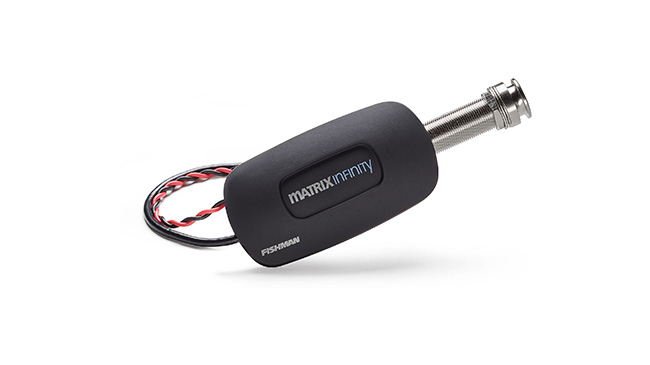
2. Fishman Matrix Infinity VT
Our expert review:
Specifications
Reasons to buy
Reasons to avoid
According to Fishman, the Matrix is the world’s best-selling undersaddle pickup and the company offers a range of options now including mic blend models (around $300) plus narrow and wide saddle width options. The reason for its enduring popularity as one of the best acoustic guitar pickups is simple – it offers a fulsome and clear acoustic sound with onboard tone (this cuts mids while boosting treble and bass) and volume controls that can be stealthily positioned inside the soundhole.
While we’d advise getting one of these installed by a repairer, it can be done yourself with the right tools and care if you feel confident enough.

3. LR Baggs M80
Our expert review:
Specifications
Reasons to buy
Reasons to avoid
The LR Baggs M1 stacked humbucker is a bit of a classic now, but the company’s M80 improves it in three useful ways – offering the option to switch between passive and active modes to utilise the built-in preamp, and a battery life LED meter so you’re never caught short onstage.
More importantly, the M80 improves on the M1 Active in its enhanced body sensitivity – a huge advantage that both models have over the competition.
The M80 includes a free-floating humbucker coil that acts as a 3D body sensor, so in addition to acting as a magnetic humbucker, it’ll also capturing more of your acoustic guitar’s character.
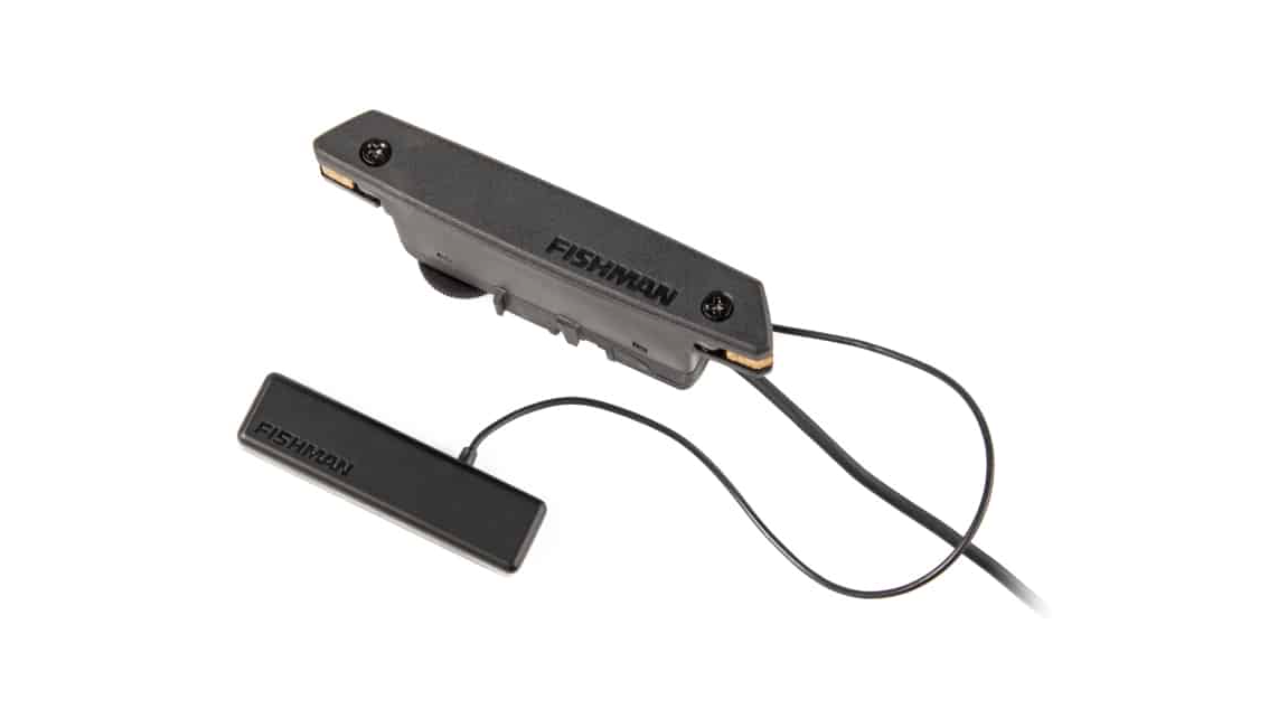
4. Fishman PowerTap Earth
Our expert review:
Specifications
Reasons to buy
Reasons to avoid
Percussive playing - tapping and the like - has become all the rage over the last decade or so, forcing players to re-evaluate what they want to hear over the PA. Once upon a time we would have settled for a close to authentic guitar tone, the experience of delightfully sonorous notes drifting artfully from speaker to audience as we play.
These days that's no longer enough. We want our public to hear our every touch, our every tap, our every last percussive knock.
Now they can. Fishman has recently introduced its PowerTap body sensor, a small bridge plate mounted module that accurately picks up playing dynamics. In Fishman-speak that's touch, ambiance and percussion, hence the Tap moniker.
Currently, the sensor is only bundled as part of a system with Fishman's excellent Rare Earth humbucker or its Infinity undersaddle piezo. Essentially, it's taking the place of a microphone in a typical dual unit setup. Is this wise? Absolutely. We found the sensor delivered a spacious 3D-like quality to our playing, not just the percussive elements but our natural picking dynamics too.
The icing on the cake is that you can split the output signal, routing humbucker and body sensor to separate amps, effects and so on. For example, you can add a little more reverb to the humbucker or go wild adding extra delay to the sensor. The PowerTap opens up so many creative opportunities.
Downsides? The humbucker option features only a basic blend control, which seems a bit mean. Alternatively, the Infinity undersaddle piezo bundle does include both volume and tone controls, so it's well worth a look too.
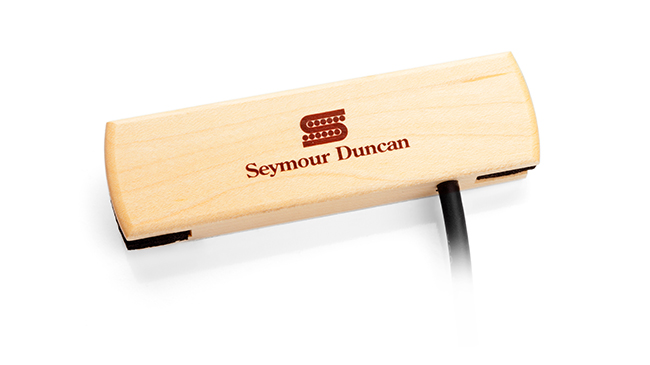
5. Seymour Duncan Woody SA-3 HC
Our expert review:
Specifications
Reasons to buy
Reasons to avoid
We certainly like the look of this acoustic soundhole pickup for starters – that housing is hand-polished rock maple for a very acoustic-friendly aesthetic (walnut also available). The tone is brighter and clearer than many passive magnetic models we’ve encountered too, making it a great option for your first acoustic guitar pickup.
It’s also non-permanent, allowing you to have the output cable running outside your guitar and into a PA or amp - just fit it whenever you need to plug in.
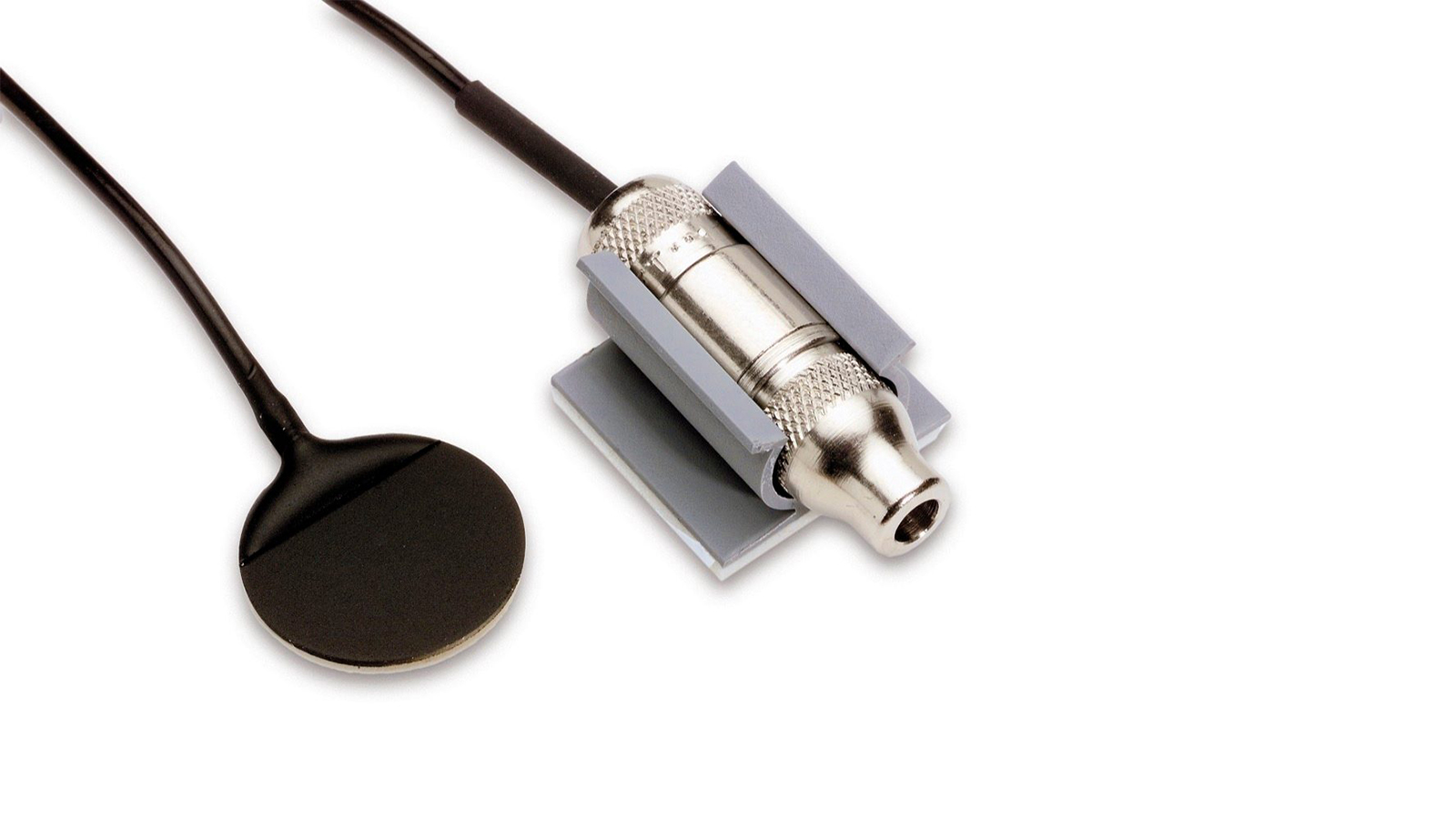
6. Fishman SBT-C
Our expert review:
Specifications
Reasons to buy
Reasons to avoid
Aimed at classical guitar players but suitable for any acoustics, this soundboard transducer can be mounted on any flat surface of the guitar, or whatever stringed instrument you choose, so you can experiment with positioning to find the optimum sound.
One of the advantages here, and with most transducer pickups, is they don’t require battery power for a preamp. And this pickup will also be great if you’re using percussive techniques on your acoustic’s body similar to players like Jon Gomm and Mike Dawes. You may choose to use it as a second output alongside a magnetic or undersaddle pickup to amplify that side of your playing.
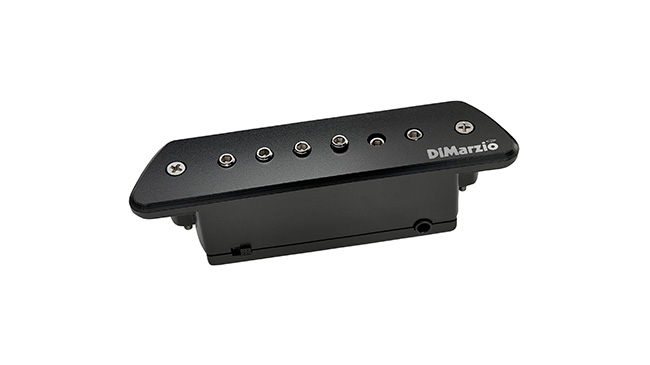
7. DiMarzio The Black Angel
Our expert review:
Specifications
Reasons to buy
Reasons to avoid
Players like John Butler use dual outputs on their acoustics to blend two different pickup sounds. Percussive players can use mics or transducers alongside a piezo and soundhole pickup so their guitar bodies are sensitive to the different techniques they use.
British acoustic virtuoso Mike Dawes’ guitar is a prime example – and it led him to develop this passive soundhole pickup alongside Larry DiMarzio and British luthier Nick Benjamin.
Because the main risk of multiple pickup sources on a guitar is going out of phase, the Black Angel has a phase switch built in to make combining with other pickups more controllable. It helps that it sounds surprisingly organic for a magnetic pickup by itself.

8. K&K Sound Pure Mini
Our expert review:
Specifications
Reasons to buy
Reasons to avoid
An acclaimed transducer offering good output and a warmer, full sound for a passive option with three sensors (the classical model has four) that are glued to the underside of your guitar’s bridge plate. And this area is less likely to produce feedback than fixing it to the soundboard itself. You’ll need good light and a mirror to do the work yourself but the payoff is the best passive system we’ve heard for producing a truer ‘acoustic’ tone.
K&K also produces a Pure Preamp (£100/$99) with bass, mid, treble and volume controls to give you tone-shaping capabilities. It even has a belt clip for keeping it close at hand onstage.
Best acoustic guitar pickups: Buying advice

Choosing the best acoustic guitar pickup for you
MusicRadar's got your back
It's a funny old world isn't it? Take any top-end electric guitar and, quite understandably, you'll expect it to be made from the finest tone woods available. We guitarists demand that natural and sunburst finishes showcase every last square inch of exquisite figuring, or that solid paintwork is so thinly applied that even the subtlest grain shows through.
Take any top-end acoustic and it's a similar story. We want to see every angel step, bee's wing, cat's paw, flame, pommele and ribble. Aesthetics is really important.
Back to that dream electric, the pickups will be a stand-out visual feature. Burnished, chromed, engraved, gold foiled, painted in camo or decorated in cartoon figures, electric guitar pickups proudly assert that this is an instrument that boasts muscular output and sublime tone.
A visible acoustic pickup, on the other hand, is viewed as an unwanted appendage. Something to be hidden out of sight – an ugly necessity that we'd rather pretend to ourselves, and our audiences, isn't there.
The fact is, pickups are fêted on an electric guitar but often scorned on an acoustic. Of course, electric guitar pickups are fundamental to the tone of the instrument, whereas acoustic pickups are seen as a necessary evil that, if you don't pick carefully, only approximate the original sound characteristics of your beloved guitar.
So, when choosing an acoustic pickup there are two primary factors to consider: tone and aesthetics. But, before we delve deeper into these two topics it's important to discover why you should buy a pickup for your acoustic guitar in the first place.
Why fit an acoustic guitar pickup?
Why? Because a pickup will reveal an entirely new dimension to your guitar and your playing.
The obvious advantage of installing a pickup is the additional volume you'll benefit from when playing bigger venues. In fact, performing solo anywhere larger than a medium-sized room will probably require amplification, and if you're fighting to be heard above bandmates then you'll need some way of boosting your sound from the get-go.
What if you're a complete novice, months if not years away from performing in front of a large crowd? We'd still recommend fitting a pickup to your guitar because it will revolutionise your practice regime, especially if you've already got access to an amp or a DAW. Listening back to your playing is a vital part of practicing that many novices avoid because of the hassle involved in miking up a guitar. Fit a pickup and suddenly recording becomes a breeze, literally a matter of plug 'n play.
If you're beyond the early novice stage a pickup opens up a whole new world of dazzling effects – reverb, delay and chorus just for starters. Perhaps the most versatile, and one we'd definitely recommend because it's so much fun, is a looper. Armed with just a looper and an inexpensive amp (it doesn't have to be a dedicated acoustic guitar amp) you can quickly build up extensive, layered masterpieces that will supercharge both your creative skills and your timing.

Which acoustic pickup should I pick up?
Let's get one thing straight, before adding to the muddle by contradicting ourselves! An acoustic guitar pickup is not a microphone. Simplistically, a microphone works by converting moving air – sound waves – into electrical voltage. Piezo acoustic guitar pickups, which are a form of transducer, are sensitive to vibrations from a solid surface – most likely your guitar's soundboard or bridge – and, under pressure, convert those vibrations into voltage. Lastly, magnetic coil pickups convert the vibration of your (magnetic) acoustic guitar strings into voltage.
It's useful to understand the difference in order to appreciate why each technology sounds different. When an audience listens to us playing they're hearing sound waves, quite literally moving air, so it follows that a microphone will capture the most authentic acoustic listening experience. It's just too bad they're often a pain to set up and use. All of the other solutions are picking up vibrations from a small part of the body of the instrument, or the strings, which unfortunately makes their capacity for producing an authentic reproduction somewhat limited.
Now for the contradiction. Some of the best-known acoustic guitar pickup products feature microphones, usually in partnership with a piezo transducer. Life's complicated enough, so you'll often find them labelled 'acoustic pickups' for convenience. We're going to include them in this guide too.
All these solutions have their fair share of advantages and disadvantages, so let's run through the pros and cons.
Microphones As we've already alluded to, large, standalone, external microphones produce the best possible results, but set-up can be agonisingly hit and miss. For obvious reasons they're not suited to exuberant live performances either. Some small instrument microphones, such as the DPA 4099 and Audio Technica ATM350GL, are designed to be clamped to the outside of your guitar where they can give stellar results. They may look a little awkward, but they are a wonderful solution for solo classical performances or any other musical genre where the guitar and guitarist remains relatively still.
Another advantage of using these instrument mics is cost. They're not cheap but they can easily be moved between any guitar in your collection without a messy, potentially damaging install/uninstall.
The downside of using a microphone, other than set-up time and the risk of moving beyond its reach, is that it can pick up a lot more than just your guitar. Finger noise, your breathing, other performers, air con, traffic noise, audience members – you name it, it'll find it. Microphones are also prone to feedback.
Undersaddle pickup An undersaddle pickup is a thin strip of crystal piezo conductor that converts vibrations into voltage. As the name suggests, it sits in the saddle slot, hidden directly beneath the saddle. Cosmetically, there's no clue a pickup has been installed other than the subtle tell-tale sign of an endpin jack.
Generally, undersaddle pickups can sound very good, but because the vibration source is weighted more towards the strings than the body of the guitar they can lack authenticity. Additionally, because of their placement they tend to have quite a hard tonal character – they're often accused of sounding 'quacky' and a bit on the bright side.
On the, ahem, bright side, they are relatively easy to install. Just one small hole needs to be drilled at the base of the saddle slot, plus another for the endpin jack. The saddle will also need to be shaved down a tad. Uninstalling an undersaddle pickup is also very easy but will require a new saddle or shim.
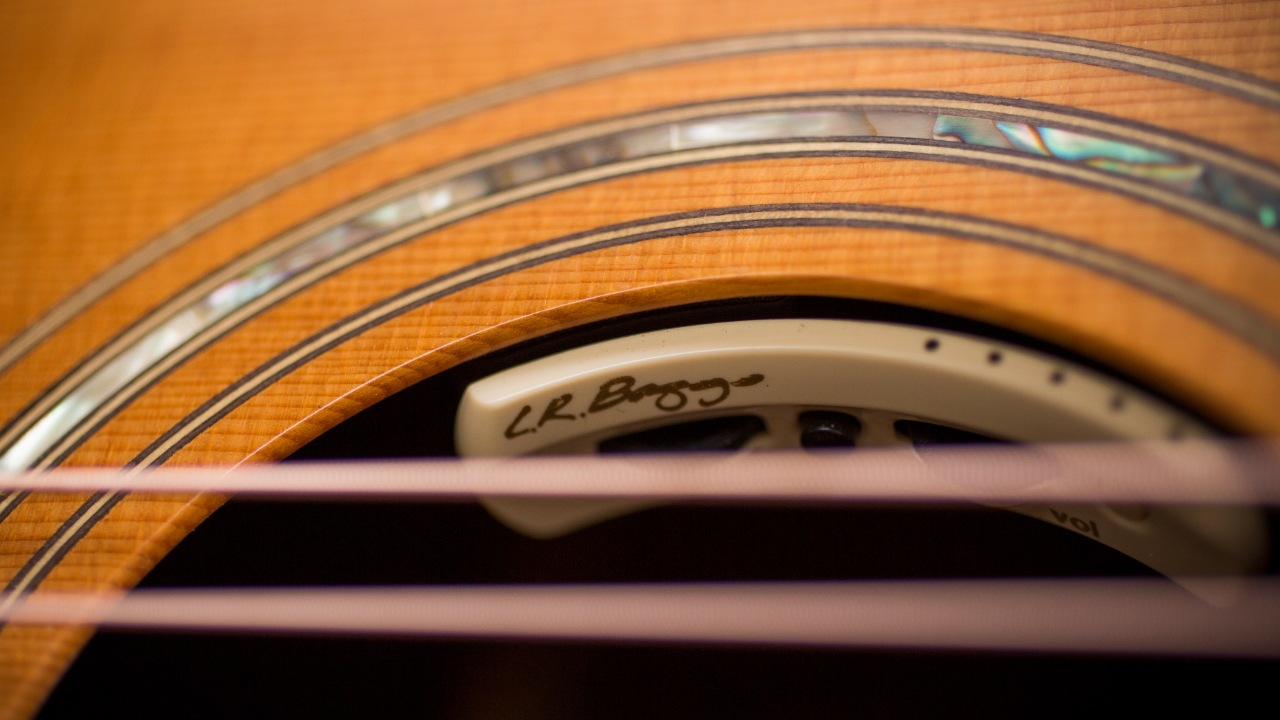
Bridge plate transducer
A bridge plate transducer comprises three or four piezo transducers, typically the size of small coins, that sit inside your guitar on the bridge plate, usually positioned directly under the saddle. Once again, they make for a very neat, completely covert install.
Judging one pickup type against another is always going to be subjective but the consensus is that a good bridge plate transducer can sound more natural than an undersaddle pickup. Certainly, the lower mids and bass are a lot more pronounced. Nevertheless, they can still sound a bit sterile when compared to a microphone.
Bridge plate transducers, together with their close cousins soundboard transducers, can be heavily influenced by a guitar's tone woods, build and bracing. It stands to reason that the more freely a guitar vibrates, the more voltage a piezo transducer will produce. Therefore, heavily built guitars, or those with more robust bracing, may sound substantially less powerful than their lighter-built counterparts. Something to bear in mind if you're demoing a bridge plate transducer on somebody else's guitar.
Installation is slightly fiddlier than for an undersaddle pickup because you'll be working inside the body of your guitar, but it involves nothing that should unnerve a competent DIYer. Because they thrive on vibration, these transducers need to be fixed as tightly as possible to the bridge plate, which is usually achieved by using superglue. Be warned, this does make uninstalling them less straightforward but it's not impossible.
Soundboard transducers work in a very similar way but usually comprise just one transducer that can sit anywhere on the soundboard inside the guitar. Most sound best glued or taped close to the bridge.
Magnetic coil soundhole pickup
A magnetic coil soundhole pickup is easily identified as a big rectangular lump straddling the soundhole. It looks, and behaves, like an electric guitar pickup with a cluster of magnetic poles/rods or bars/rails readily converting string vibration into voltage.
Both single coil and humbucker versions are available. As you'd expect, the former sound sparkly, clear and bell-like but with the potential for noise. The latter sound warmer, smoother, have a higher output and lack the propensity to hum.
They can perform wonderfully when you play close to the nut but tend to sound progressively more electric as you work your way up the fretboard. And, of course, a magnetic coil pickup will only work with magnetic strings, so if you rock a nylon strung guitar (like Willie Nelson) you'll hear diddly squat.
The main advantage of the soundhole pickup is that they're a doddle to fit. Provided you don't mind a loose cable dangling from your soundhole you can even bodge a temporary install within just a few minutes.
The disadvantages are that traditionally these pickups were unsightly and sounded artificial, but it's worth conceding that the well-known brands have improved both the appearance and sound quality of their pups immeasurably over the past decade or so. They're a good option if you want to invest in just one pickup that can be swapped around a variety of guitars. Or, perhaps you just love the sound of a humbucker in an acoustic, and there's nothing wrong with that.
Internal mic pickups
We've left internal mic pickups for last because invariably they're used in combination with the piezo transducer solutions listed above. Commonly, they're small microphones that are tucked pretty much out of sight, just inside the lip of the soundhole but sometimes you'll find them suspended from a gooseneck too.
Just like the external mic options they sound more authentic, sweeter, more soulful and less strident than piezo transducers. To benefit from the best of both worlds, high-end solutions will include a piezo transducer – undersaddle or bridge plate – and an internal mic, together with a sophisticated preamp. EQ sliders and a blend control enable you to find the best tone possible.
The only disadvantages of these systems are cost and complexity, although installation is still relatively straightforward. Positioning an internal mic can be a frustrating affair, but somewhere close to where the fretboard meets the soundhole should work well. It's a one-time job, so once you've found the sweet spot you're good to go.
If it's on a gooseneck or swivel mount then pointing it towards the back of the guitar will decrease the bass response and vice versa – useful to know if you're often playing venues with less than perfect acoustics.
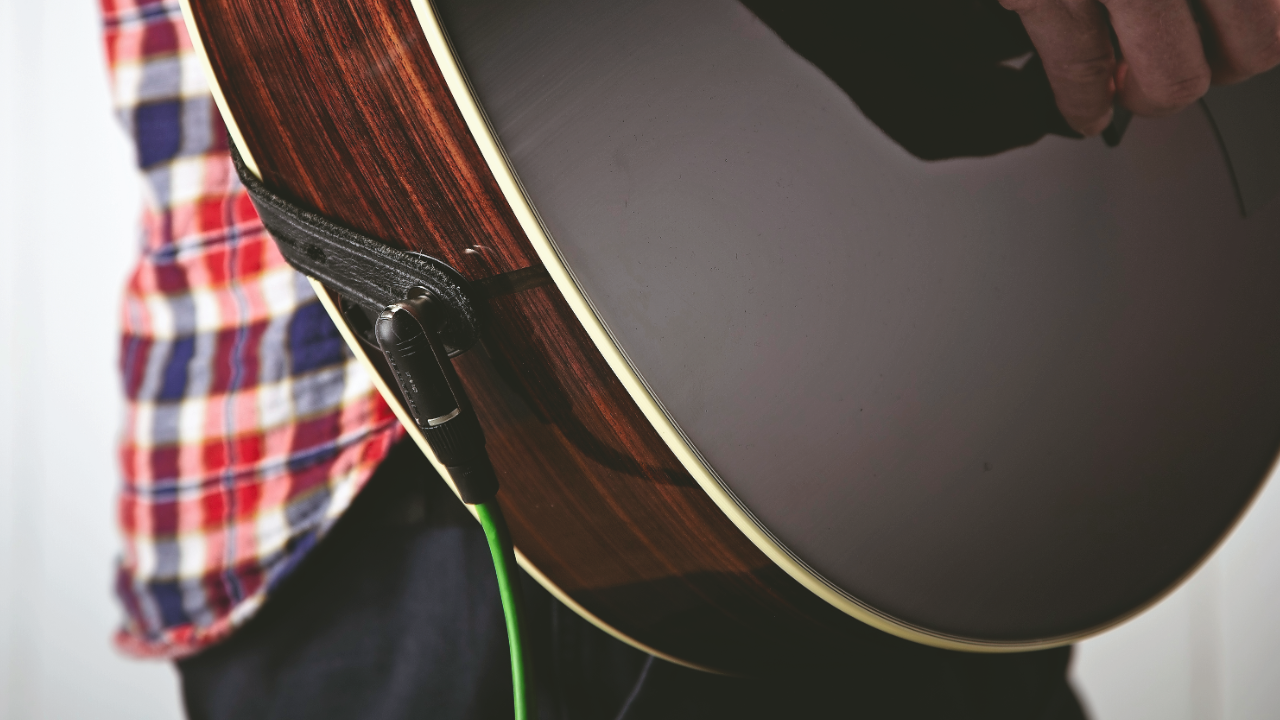
Do I need a preamp for my acoustic guitar pickup?
Frankly, many guitarists are very satisfied with a passive, inexpensive, easy-to-install undersaddle or soundhole pickup without ever feeling the need to invest in active circuitry. However, if you gig a lot, find yourself frequently plugging into a mixing desk or just demand the very best audio quality then you'll find a preamp invaluable.
A preamp does much more than just boost your signal. Available as either onboard or external units, most will boast basic tone and volume controls at the very least. More sophisticated units will feature three- or four-band EQ and, if you have a dual mic and piezo transducer setup, a blend control. This enables you to dial in clarity from the piezo or fullness and warmth from the mic to taste.
It's always preferable to EQ your sound as close to the beginning of the signal chain as you can, rather than try to fix tonal issues using your amp or a mixing desk. With a skilful touch, the EQ controls on a preamp can absolutely transform a piezo transducer, replacing that characteristic thin, tinny, synthetic sound with a tone that's both rich and full.
Other popular niceties include impedance matching, tuners, notch filters and phase switching, more of which below.
How do I stop feedback when using an acoustic guitar pickup?
All the amplification solutions mentioned here are prone to howling feedback, simply because the acoustic guitar is the perfect volatile feedback making machine. Acoustic guitars are designed and built to resonate, it's a fundamental quality we look for when choosing a fine instrument that sounds agreeably alive in our hands when we're playing it.
Essentially, when the sound of an acoustic is relayed live through a speaker the sound waves produced can further resonate the body of the guitar, causing a feedback loop. In other words, the amplified output is also acting as an input that's then getting re-amplified in a disastrous circuitous loop.
What can be done to save the wail? Simply turning your back to the speaker often helps, or turning the speaker away from your guitar if that's possible. Other low-tech solutions include fitting a soundhole cover to your guitar or moving the internal mic, again if that's possible.
Feedback is more prevalent in the lower register, so EQ can be a great help. If you've invested in a preamp see if you can EQ out the offending frequencies. Better still, if your preamp has a notch filter you may be able to isolate the cause of the feedback without disrupting the tone of your guitar too much.
Howling feedback can also be heightened by phase issues – the slight delay between the sound of your acoustic and its amplified output. Many preamps feature a phase switch that can make your signal in phase, or various states of out of phase. Have a play with this switch to see if it helps but just be aware that out of phase signals can sound weak and lacklustre.
Preamps can sometimes help with impedance mismatches too, another potential cause of feedback. Piezo transducers are fairly high impedance devices, while mixing desks are relatively low impedance. Some preamps can take a high impedance input while matching the low impedance requirements of the desk on output. This can be especially useful because high impedance boosts bass frequencies, which can cause issues with boominess and, you've guessed it, feedback.
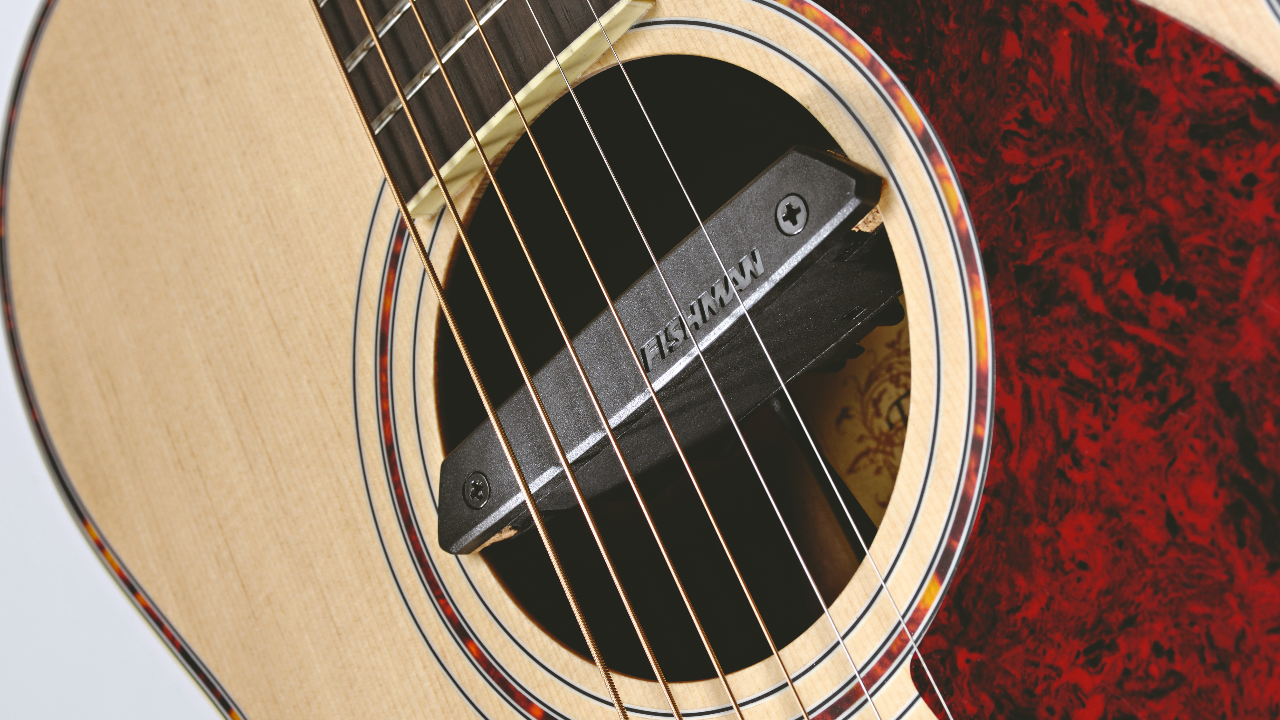
How do I install an acoustic guitar pickup?
Installing any one of these pickup solutions is a relatively straightforward job for anyone handy who owns, or can beg, borrow or steal (we're joking!) some basic tools. Instructions vary from pickup to pickup, and brand to brand, but at worst there's little to it beyond drilling a few small holes and sticking a transducer or two to the inside of your guitar with some strong adhesive.
Most bridge plate transducers come with detailed instructions telling you exactly where to fit them, but you will need to identify the sweet spot for soundboard transducers yourself. Just be patient and use double-sided tape to explore likely positions before committing to a final placement.
If you're not very handy, accident prone even, you do risk tearing a sharp drill bit right across your guitar's beautiful gloss finish, or gluing your hand fast to the underside of the soundboard with superglue. What an awkward and embarrassing trip to A&E that would be.
Likewise, cutting a sizable hole in the side of your precious guitar to fit a preamp control panel isn't a job to be taken lightly, so unless you really know what you're doing we'd recommend leaving that job to your local luthier or experienced guitar tech.
Whether you DIY, or entrust the install to somebody more experienced, we urge you to fit a pickup of any kind to your acoustic. Practice becomes more fun and the joys of live performance beckon when you choose to amplify your life…
Find out more about how we test music gear and services at MusicRadar.
Related buying guides
- On a budget? These are the best acoustic guitars under $500/£500
- Check out the best 3/4 acoustic guitars
- Plug in with the best acoustic-electric guitars
- Record the perfect take with the best acoustic guitar mics
- The best acoustic guitars under $/£1,000
- Explore the best acoustic guitars for beginners
Get the MusicRadar Newsletter
Want all the hottest music and gear news, reviews, deals, features and more, direct to your inbox? Sign up here.

Rob is the Reviews Editor for GuitarWorld.com and MusicRadar guitars, so spends most of his waking hours (and beyond) thinking about and trying the latest gear while making sure our reviews team is giving you thorough and honest tests of it. He's worked for guitar mags and sites as a writer and editor for nearly 20 years but still winces at the thought of restringing anything with a Floyd Rose.
“For players who want more – more pickups, more speed, and more in-your-face Kramer attitude”: Kramer delivers the face-melting shred candy with six refreshed electrics, complete with US-made pickups
“The perfect magnetic combination to unlock the full tonal potential of your P/J Bass”: Fender releases a Tim Shaw-designed Chrome Cobalt pickups for the P/J configured bass guitar in your life